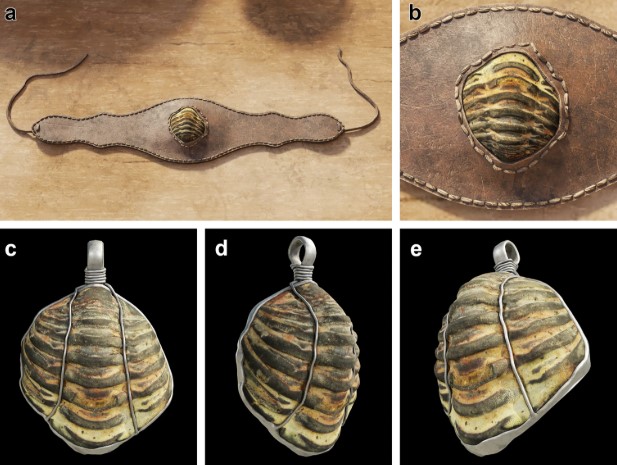Excavations at a 2,000-year-old settlement in Spain have yielded the first ever trilobite fossil from Roman times. Found in a trash heap associated with a high-status household, the specimen appears to have been intentionally modified to form part of a necklace or bracelet, and was probably used as a magical pendant designed to protect its wearer.
The prehistoric marine arthropod was discovered at a site called A Cibdá of Armea, which was a prosperous metal mining town in Galicia between the first and third centuries CE. Dating back to the Middle Ordovician – more than 450 million years ago – the specimen comes from a site in central Iberia, some 430 kilometers (267 miles) from Armea, and may have been brought to Galicia by traders or settlers from the Lusitania region.
According to the authors of a new study about the find, this is just the third trilobite fossil ever confirmed to have been collected and used by people more than 1,000 years ago, and the first from a Roman context.
“The modifications observed on the underside of the specimen, which exhibits up to seven artificial wear facets to flatten and shape the fossil, are interpreted as indicating its possible use within a pendant or bracelet, likely serving as an amulet with magical or protective properties,” write the researchers. This interpretation is supported by the global archaeological record, which includes a small number of trilobites that appear to have been used as pendants by some Stone Age Europeans and Native Americans, supposedly for talismanic purposes.

Examples of how the trilobite may have been mounted on a necklace or bracelet.
Image courtesy of Fernández-Fernández et al./Archaeological and Anthropological Sciences (2025)
Despite the lack of holes or perforations on the Roman fossil, the researchers insist that the jewelry hypothesis remains the most likely, adding that the trilobite could have been set on a metal mount. “[R]egardless of how the trilobite may have been mounted or not, it was certainly intended to serve one of the potential functions outlined above; as a magical, propitiatory, and apotropaic object (as a talisman or amulet with a supernatural purpose),” they write.
Alternatively, the study authors suggest that the fossil may have been used as a token in an ancient Roman board game such as ludus latrunculorum – which was a bit like chess –or terni lapilli, which resembled tic-tac-toe. Game pieces made from mammoth teeth and other fossils have previously been found at Roman sites in Poland, although it’s hard to say for sure if the Armea trilobite could have served this purpose.
Despite no other trilobites having been recovered from Roman sites, the citizens of this ancient Empire are known to have been fascinated by prehistoric remains. The legendary emperor Augustus, for instance, is reported to have been a keen fossil collector and, according to the study authors, even founded the first known palaeontological museum.
The study is published in the journal Archaeological and Anthropological Sciences.
Source Link: First Known Trilobite Fossil Collected By Romans Was Used As "Magical" Pendant